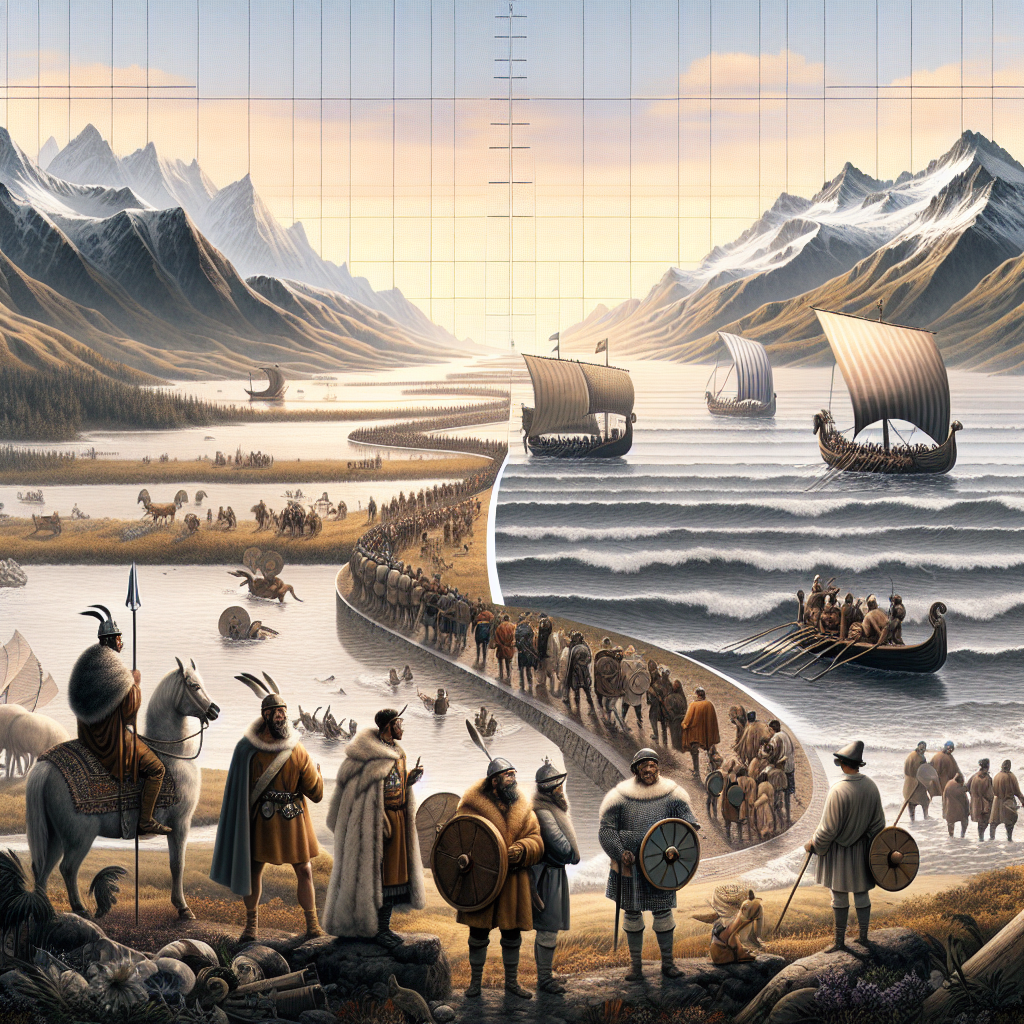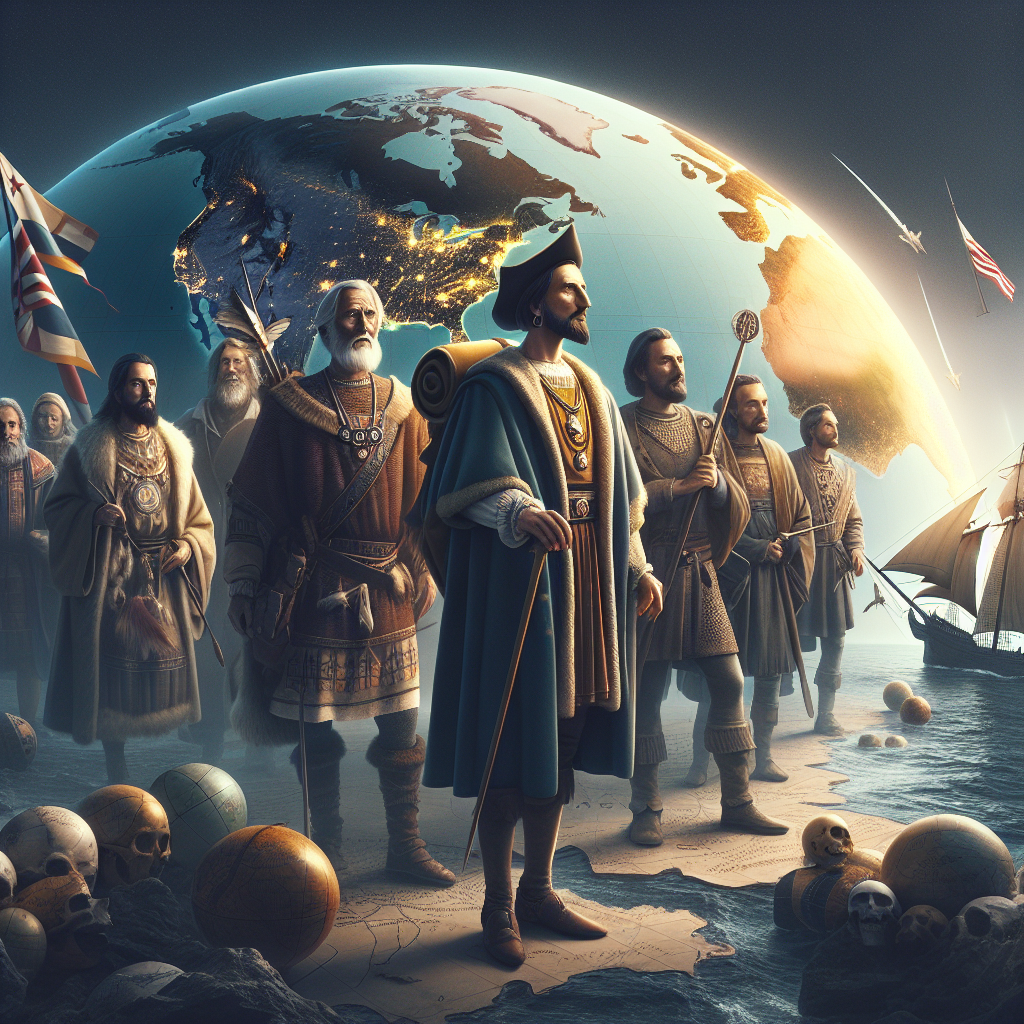Did Columbus Really Discover America? Truth Behind the History of Indigenous Peoples and European Explorers
- Xfacts

- Sep 15, 2024
- 3 min read
Exploring the annals of history often reveals intriguing tales that challenge our preconceived notions. Columbus Day stands as a symbolic holiday in the United States, celebrating the Italian explorer Christopher Columbus's purported "discovery" of America in 1492. However, delving deeper into the annals of history sheds light on a more nuanced narrative—one that transcends the Eurocentric view of exploration and colonization.
Unveiling Indigenous Footprints
Thousands of years before (about 15,000 years ago) Columbus's famed voyage, the cloak of the New World was already adorned with the imprints of its earliest discoverers—the Clovis peoples. These ancient wanderers, hailing from the Bering land bridge that linked Alaska to Siberia, ventured into the unknown expanse of America. At a time when civilizations were embryonic, the Clovis people traversed the vast landscapes, leaving behind a legacy that has woven into the intricate tapestry of indigenous cultures.

European Voyages and Unforeseen Encounters
While Columbus's expedition is heralded in history books, the Norsemen, led by Leif Erikson, had already set foot on North American shores, notably in Canada, centuries before the famed explorer's arrival (10th century ad).
Their voyages, intertwined with sagas of adventure and exploration, testify to the thirst for discovery that coursed through the veins of early European navigators.
The Quest for New Horizons
Prior to the Age of Discovery (15th and 16th centuries), various events and advancements contributed to the growing interest of Europeans in exploring the world.
European Christians had engaged in military conflicts known as the Crusades in western Asia, bringing back exotic goods from Asia. Additionally, the captivating tale of Marco Polo and his journey to China in the 1200s, along with the incredible marvels he encountered, further fueled people's curiosity.
When explorers began making longer voyages, a ship called the carrack or nao proved better than the caravel. The carrack was a rounder heavier ship, more fitted to cope with ocean winds. The carrack also had more room to store provisions for longer journeys as well as the spices and other trade goods the explorers acquired.
Discoveries in the science of the stars—astronomy, invention of compass in 1100s—helped sailors navigate their ships better. Developments in printing and engraving helped make maps more widely available.
European exploration of the New World was not merely driven by a lust for discovery but also by a pursuit for lucrative trade routes with the lucrative markets of Asia. The allure of oriental spices and wealth manifested in a convergence of ambition and curiosity, leading seafarers to embark on perilous journeys across uncharted waters.

Columbus: Accidental Discoverer or Misguided Navigator?
Christopher Columbus, the master navigator, landed on an island in the Americas on the morning of Oct. 12, 1492.
While Columbus's ships sailed through the ocean, destiny brought about a fortuitous meeting with the New World. Despite his intention to find a western sea route to Asia, his unintended discovery of America changed the trajectory of history. Until his death, he remained convinced that he had reached Asia.
The repercussions of his arrival were felt far and wide, marking the beginning of European expansion and, regrettably, the devastating decline of indigenous communities.
Legacy of Exploration and Exploitation
The legacy of European exploration reverberates through the corridors of time, intertwining stories of discovery with narratives of exploitation and colonization. The treasures of the New World, borne of conquest and conflict, speak of a tumultuous era when empires clashed and civilizations crumbled beneath the weight of foreign ambitions.
Violent conquest and diseases introduced by the Europeans in the Americas resulted in the deaths of a significant number of Indigenous people.
Diseases such as smallpox, yellow fever, malaria, influenza, and measles were unintentionally transmitted to the New World.
The Indigenous populations dwindled even further as Europeans compelled them to toil on plantations and in mines under brutal circumstances. Eventually, Europeans brought enslaved Black Africans to the Americas to serve as a labor force in place of the Indigenous people.
As we commemorate Columbus Day, let us not merely honor the figurehead of exploration but also reflect on the multifaceted narratives that underpin the history of our world. From the silent footfalls of ancient peoples to the billowing sails of intrepid sailors, the tapestry of America's past is woven with threads of diversity and resilience.



Comments